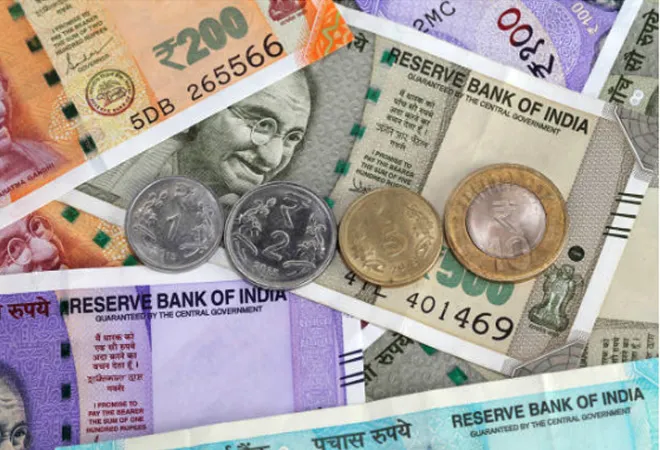-
CENTRES
Progammes & Centres
Location

On 28 June, Union Finance and Corporate Affairs Minister, Nirmala Sitharaman, announced another set of economic measures—ostensibly to provide relief to sectors affected by the second wave of the COVID-19 pandemic in the country.
As has been the trend in the past one year, a large part of these latest economic measures are new loan and credit schemes. The relief package includes reiteration of one budget announcement—Reform-Based Result Linked Power Distribution Scheme. This is a scheme that is supposed to be implemented from 2021-22 to 2025-26, with a total outlay of INR 303,058 crore—of which the central share is INR 97,631 crore. This amount is included in this package. So, this is not an additional amount and cannot be deemed as a stimulus.
The new credit/loan guarantee/insurance schemes are as follows:
Curiously, the relief package also includes the next two years’ allocation of INR 19,041 crore for the broadband project under BharatNet. There are other allocations like the INR 100 crore for free one month tourist visa and INR 77 crore for revival of North Eastern Regional Agricultural Marketing Corporation (NERAMAC). Apart from the negligible amounts, the short-term immediate efficacies of these schemes to boost output and employment remain questionable.
If these allocations, along with the loan/insurance schemes and already budgeted amount for Power Distribution Scheme, are excluded from the total INR 628,993 crore (as claimed by the government) – then actual size of this relief package comes down to INR 123,644 crore, less than one-fifth of the claimed amount (Table 1).
| TABLE 1: Break-up of 28 June 2021 Relief Package | |||
| Scheme | Period | Amount (Rs. Cr.) | Remarks |
| Economic Relief from Pandemic | |||
| Loan Guarantee Scheme for COVID Affected Sectors | 2021-22 | 110,000 | |
| Emergency Credit Line Guarantee Scheme (ECLGS) | 2021-22 | 150,000 | Expansion |
| Credit Guarantee Scheme for Micro Finance Institutions | 2021-22 | 7,500 | |
| Scheme for tourist guides/stakeholders | 2021-22 | - | Covered under loan guarantee scheme |
| Free One Month Tourist Visa to 5 Lakh Tourists | 2021-22 | 100 | |
| Extension of Atma Nirbhar Bharat Rozgar Yojana | 2021-22 | - | |
| Additional Subsidy for DAP & P&K fertilizers | 2021-22 | 14,775 | |
| Free food grains under PMGKY from May to November, 2021 | 2021-22 | 93,869 | |
| Health | |||
| New Scheme for Public Health | 2021-22 | 15,000 | Scheme outlay- INR 23220 Cr; Central share- INR 15000 Cr |
| Impetus for Growth & Employment | |||
| Release of Climate resilient special traits varieties | 2021-22 | - | |
| Revival of North Eastern Regional Agricultural Marketing Corporation (NERAMAC) | 2021-22 | 77 | |
| Boost for Project Exports through NEIA | 2021-22 to 2025-26 | 33,000 | |
| Boost to Export Insurance Cover | 2021-22 to 2025-26 | 88,000 | |
| Broadband to each village through BharatNet PPP Model | 2021-22 to 2022-23 | 19,041 | |
| Extension of Tenure of PLI Scheme for Large Scale Electronic Manufacturing | - | Time extension | |
| Reform Based Result Linked Power Distribution Scheme (Budget Announcement) | 2021-22 to 2025-26 | 97,631 | Scheme outlay - INR 303,058 Cr; central share - INR 97,631 Cr |
| Total | 628,993 | ||
| Source: Press Information Bureau (PIB) |
The only direct economic relief in this package comes from the extension of the Pradhan Mantri Garib Kalyan Anna Yojana (PMGKAY). Under this scheme, free foodgrains will be provided to eligible citizens from May to November 2021. INR 93,869 crore has been allocated for this extension (Table 1).
In a way, this one (actual fiscal relief measure) is garnished by sundry other loan schemes and inconsequential announcements, and then presented as a package. If allocation for PMGKAY extension is taken out from the actual size of the relief package (as calculated earlier), then the amount will further diminish to INR 29,775 crore—an amount not worth mentioning compared to the central government finance.
The country continues to reel in the ongoing pandemic, and the second wave has delivered another economic blow by disrupting production in both rural and urban sectors. The unemployment rate has climbed from 7.9 percent in April 2021 to 11.9 percent in May when the second wave resulted in stringent lockdowns across states, according to CMIE estimates.
Due to broken mechanism of acquiring credible data during pandemic, the real extent of damage is yet to be estimated. However, there is little disagreement that the Micro, Small and Medium Enterprises (MSMEs) bore the biggest losses of the ensuing disruptions. This has serious repercussions on employment as MSMEs provide livelihood to a large section of the population. A third wave spread of COVID-19 has the potential to fatally damage the MSMEs, and then the sector may not recover fully before 2023.
In this scenario, continuing with new credit and loan guarantee schemes makes no economic sense”. The economy needs direct fiscal intervention, and any resultant deficit can be financed in various ways. That is what the road to recovery needs in the short run.
The views expressed above belong to the author(s). ORF research and analyses now available on Telegram! Click here to access our curated content — blogs, longforms and interviews.

Abhijit was Senior Fellow with ORFs Economy and Growth Programme. His main areas of research include macroeconomics and public policy with core research areas in ...
Read More +